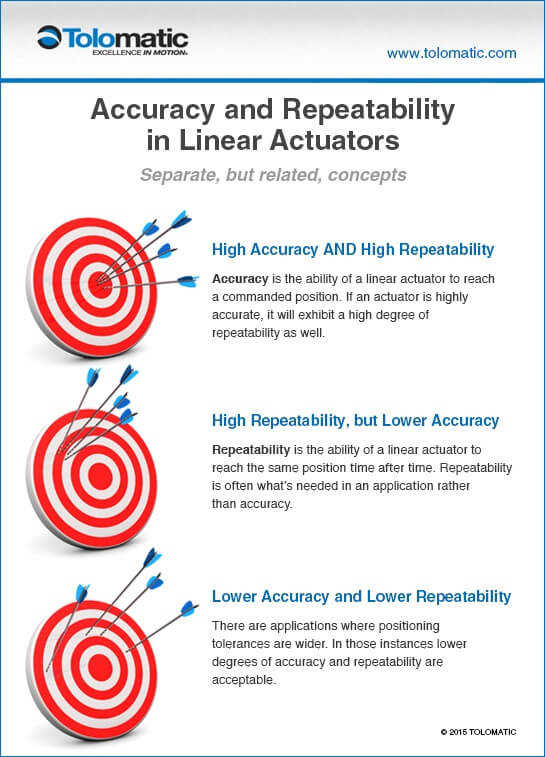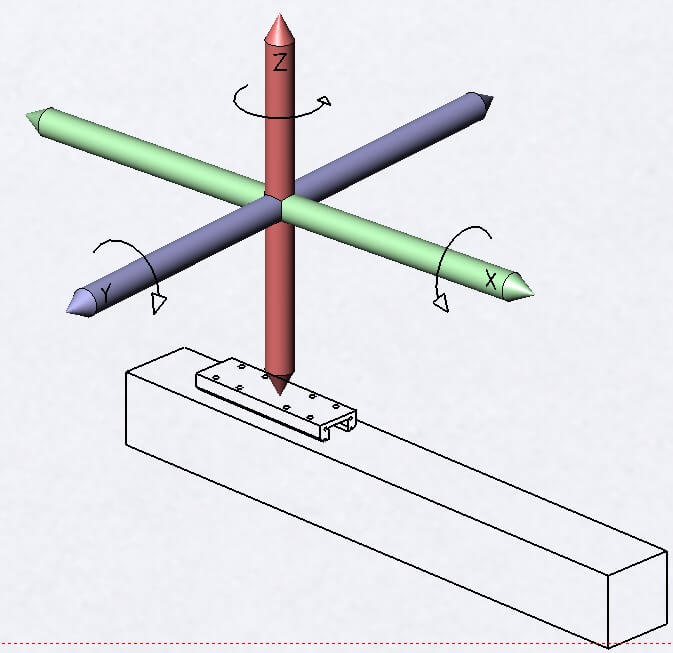[INFOGRAPHIC] Accuracy and repeatability in linear actuators
By Gary Rosengren on September 15, 2015
 Machine builders frequently ask us, “How accurate is this actuator?” The answer is more than a number found in the product’s specifications. The real-world answer is much more complex.
Machine builders frequently ask us, “How accurate is this actuator?” The answer is more than a number found in the product’s specifications. The real-world answer is much more complex.
In the real world of manufacturing, a greater degree of accuracy can come with a higher price tag. Sometimes you just need repeatability in your application, and that can be less costly. We urge you to thoroughly study the requirements and parameters of each application before selecting an actuator. Understanding the specific needs of each application will help you avoid excess costs and design a system with the best overall value.
For a thorough exploration of this topic, please download this white paper. And download the file of our accuracy and repeatability infographic.
Accuracy – more than a number
Many factors affect the overall accuracy of any linear actuator in an application. (Accuracy is defined as the ability of an actuator to achieve a specified position. See the infographic for an illustration of the concept.)
- Degrees of freedom Any linear actuator has the possibility for error in six degrees of freedom: the X (back and forth) axis, the Y (side to side) axis and Z (up and down) axis, as well as rotation around each of these axes. A machine designer should be familiar with the application’s requirements for
 position accuracy on each of these axes.
position accuracy on each of these axes. - System components Electric linear actuators are made up of components that affect accuracy, such as the housing and lead screw type. Extruded housings are typically manufactured to wider tolerances than machined housings. Ball screws are typically more accurate than acme screws. Even motors and their encoders affect accuracy in electric linear motion control systems. The designer may need to calculate the total of all relevant tolerances to determine if an actuator will meet the application’s requirements.
- Mounting and orientation Mounting affects accuracy by limiting movement along an axis. For example, anchoring an actuator to a known flat surface could eliminate errors due to bowing and twisting (distortion on the Y and Z axes).Or an actuator oriented horizontally may exhibit back-driving (an error on the X axis). However, the same actuator won’t have this problem if mounted vertically, moving downward, since gravity will prevent back-driving. A design engineer may need to consider mounting and orientation when evaluating linear actuators.
 Don’t pay for accuracy if repeatability’s what you need
Don’t pay for accuracy if repeatability’s what you need
Avoid paying for more capability than your application calls for. If you take a close look at your application, you may find that what you need is not accuracy so much as a high degree of repeatability. (Repeatability is the ability of an actuator to achieve a given position time after time. Look at the visualization of the concept in our infographic.)
High repeatability equals high predictability which may be what your application needs. If you can control the actuator’s accuracy along the critical axes through mounting and other means, you may be able to use a more economical model. That could lower overall system costs and make you a hero!
Ask for help and advice from your linear motion supplier. These experts are there to help you.
Learn more
Click here for our white paper on accuracy and repeatability in linear actuators.

 Ask an Engineer
Ask an Engineer